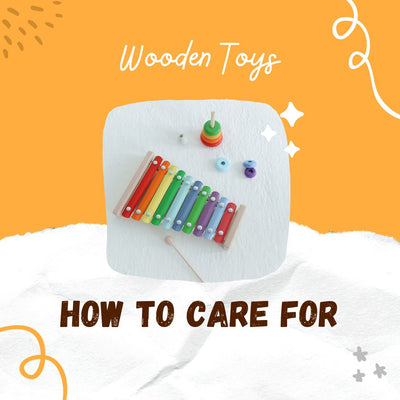Geography is a fascinating subject that helps children develop a deeper understanding of the world around them. However, getting children excited about geography can sometimes be a challenge.
We will explore some effective strategies and activities to ignite children's curiosity and engage them in the exciting world of geography.
How?
-
Make it Hands-On: Children learn best through hands-on experiences. Introduce geography in interactive ways by incorporating maps, puzzles, globes, and other tangible resources. Encourage children to touch, explore, and manipulate these tools. Let them trace their fingers along the lines, discover continents and countries, and identify key landmarks. By engaging their senses, children develop a personal connection to geography and are more likely to retain information.
-
Gamify Learning: Children love games, so why not transform geography into a fun and exciting adventure? Create geography-based games and challenges that make learning enjoyable. For example, organise a scavenger hunt where children have to locate countries on a map or play a "Guess the Landmark" game by showing pictures of famous landmarks and asking children to identify them. By infusing an element of playfulness, children will be naturally drawn to learning geography.
-
Explore Maps and Globes: Introduce children to different types of maps and globes. Show them how maps are not just flat representations but can be three-dimensional, interactive, or even digital. Encourage them to study maps of their neighborhood, city, and country, and then gradually expand to regional and world maps. Discuss the symbols, colors, and legends used on maps to help them understand the information conveyed. Exploring maps in various formats keeps geography fresh and captivating.
-
Incorporate Technology: Incorporate technology into geography lessons to captivate children's interest. Use interactive online maps, virtual reality experiences, or educational apps that provide an immersive learning environment. These tools allow children to explore different regions, landmarks, and cultures virtually. Additionally, educational videos and documentaries about geography can spark their curiosity and provide visual representations of the diverse landscapes and people around the world.
-
Connect Geography to Real-Life Experiences: Help children see the relevance of geography in their daily lives. Discuss how geography influences climate, natural resources, and ecosystems. Relate geography to their own experiences, such as exploring local landmarks, understanding weather patterns, or discussing the origin of their favorite foods from different countries. By making connections between geography and their own lives, children will develop a personal investment in learning more about the subject.
-
Encourage Cultural Exploration: Geography is closely intertwined with culture. Encourage children to explore different cultures and traditions from around the world. Introduce them to books, stories, and music from different countries. Celebrate multicultural events and encourage children to share their own cultural backgrounds. By fostering an appreciation for diverse cultures, children become more interested in the world and the people who inhabit it.
-
Field Trips and Excursions: Take learning beyond the classroom by organising field trips and excursions related to geography. Visit local museums, science centers, or nature reserves that offer exhibits or programs on geography. Arrange trips to geographical landmarks or invite guest speakers who can share their experiences of exploring different parts of the world. These real-world experiences provide children with memorable encounters and reinforce their interest in geography.
Nurturing children's interest in geography is a rewarding endeavour that opens doors to understanding the world. By making geography hands-on, incorporating games and technology, connecting it to real-life experiences, encouraging cultural exploration, and organising field trips, we can inspire curiosity and engagement. Remember, the key is to make learning geography fun, relevant, and accessible, allowing children to explore and discover the wonders of the world around them.
In a rapidly globalising world, fostering a global perspective and understanding of geography is crucial for children. One of the most effective tools for introducing children to the world is the world map. It not only sparks curiosity but also offers numerous benefits that go beyond memorising countries and capitals. In this blog post, we will explore the advantages of learning about the world map for kids and why it should be an integral part of their education.
Why?
-
Cultivating a Sense of Curiosity: The world map acts as a gateway to discovery, igniting a sense of curiosity in children. When children are exposed to the vastness and diversity of the world through a map, they become more interested in exploring different cultures, languages, and traditions. This curiosity fosters a lifelong love for learning and encourages children to ask questions about the world around them.
-
Developing Spatial Awareness and Map Skills: Studying the world map helps children develop spatial awareness and map-reading skills. By understanding the relationship between countries, continents, oceans, and landmarks, children gain a sense of perspective and learn how to navigate the world. Map skills are fundamental in everyday life, whether it's reading directions, planning trips, or comprehending geographical information.
-
Enhancing Cultural Understanding and Empathy: The world map acts as a visual representation of the world's cultural diversity. Learning about different countries and their unique attributes promotes cultural understanding and empathy in children. They begin to appreciate the rich tapestry of human experiences, traditions, and perspectives. Understanding that people have different beliefs, values, and customs fosters tolerance and acceptance, building a more inclusive society.
-
Encouraging Global Citizenship: When children learn about the world map, they develop a sense of global citizenship. They realise that they are part of a larger global community and that their actions can have an impact beyond their immediate surroundings. By understanding global issues, such as climate change, poverty, and human rights, children are more likely to develop a sense of responsibility and empathy towards the world and its inhabitants.
-
Stimulating Critical Thinking and Problem-Solving Skills: Studying the world map encourages children to think critically and solve problems. As they navigate the complexities of geography, they develop cognitive skills such as pattern recognition, spatial analysis, and deductive reasoning. They learn to compare and contrast different regions, identify geographical features, and understand the consequences of human-environment interactions. These skills extend beyond geography and become valuable assets in various academic and real-world scenarios.
-
Fostering a Sense of Identity and Belonging: Understanding where they fit in the world helps children develop a sense of identity and belonging. Learning about their own country's location, neighbouring nations, and global connections builds a foundation for cultural pride and national identity. This knowledge instills a sense of belonging and encourages children to explore their heritage while embracing a global outlook.
Learning about the world map offers a multitude of benefits for children. It cultivates curiosity, develops spatial awareness and map skills, enhances cultural understanding, and fosters a sense of global citizenship. Furthermore, it stimulates critical thinking and problem-solving skills while nurturing a sense of identity and belonging. By integrating the world map into children's education, we equip them with the tools and knowledge to become informed global citizens, ready to navigate and contribute to an interconnected world.





